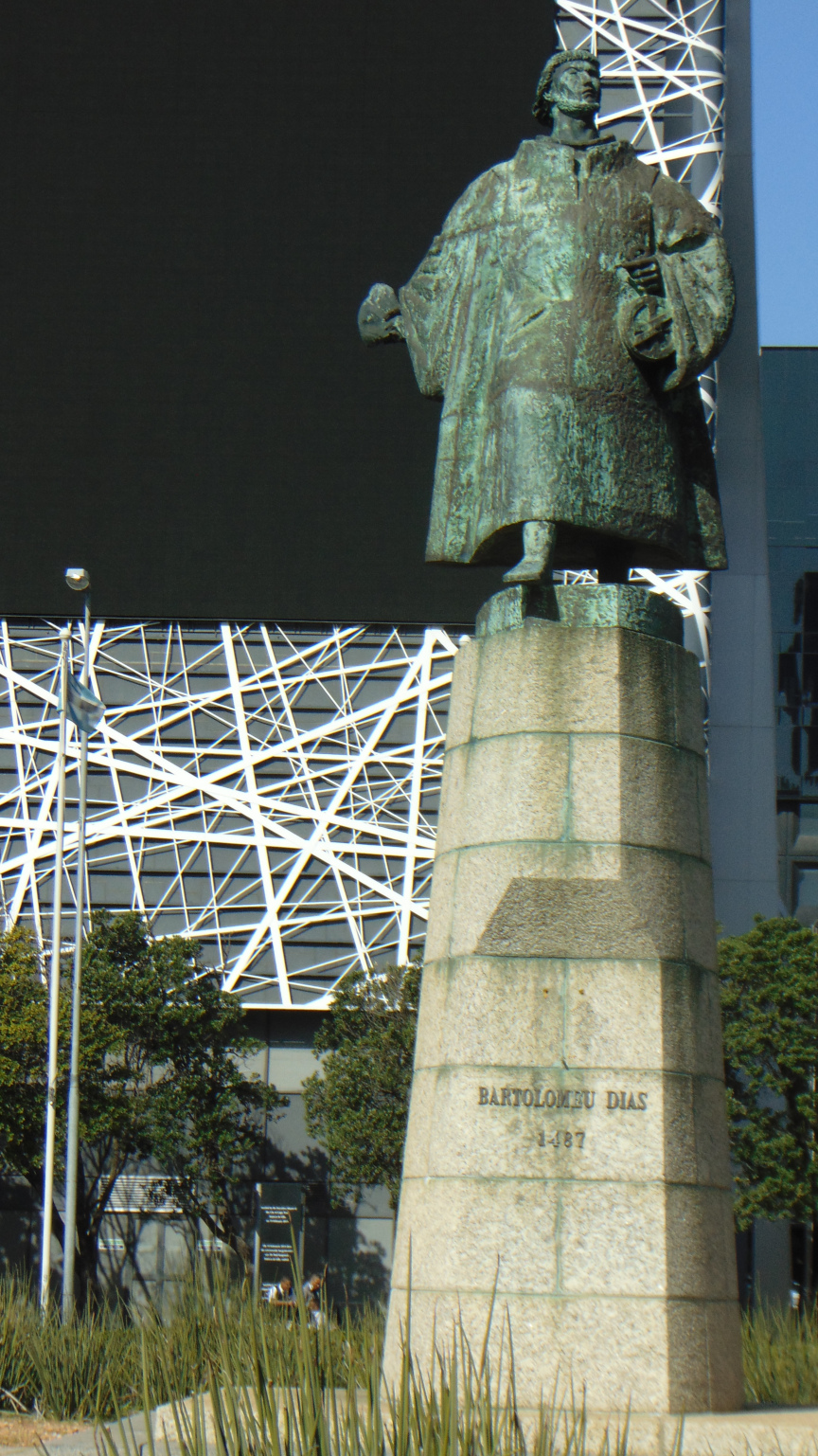
The Great Sacrifice (Part Two)
August 2, 2020
The Red-Head Father of Fake Facts and the Peace King
September 27, 2020By Satish Sekar © Satish Sekar (September 15th 2020)
Unhistoric Rebuke
The Democratic Alliance’s Veronica van Dyk has rebuked President Cyril Ramaphosa for wanting to rewrite history by removing statues from the country’s Apartheid past from public places. Really?
I recently stayed at a hotel, a stone’s throw from some statues. Among them is Bartolomeu Dias who stands alone in a roundabout near the Capetonian Hotel. Few knew who the figure on the plinth was, so I went to check. It was Bartolomeu Dias, but who was he? Why did he deserve a statue? My investigation would provide important answers to both questions.

Dias was a 15th Century Portuguese adventurer. He was supported on his trips by the Portuguese King, João II, who was intrigued by tales from Africa.
Dias had done little of note before the trip that made his reputation. He rounded the Cape of Good Cape – the first European to do so – European being the operative word.
But did Dias deserve even that accolade? He used previous intelligence, including a Venetian map from around 1460 to help him to navigate the southern tip of Africa.
Even in terms of European achievements what had Dias ‘discovered?’ Allegedly, he ‘discovered’ maritime route from Europe to Asia by rounding Africa. But the Venetian map indicated that Dias was not even the first European to ‘discover’ the Cape – the Ventians had beaten him by over two decades.
But even allowing for the Venetians, what had the Europeans actually discovered? The Portuguese and Venetians were good sailors and navigators, but even in terms of foreigners, Dias had not been the first to round the treacherous waters of the Cape of Good Hope and nor had the Venetians.They were both around 2000 late.
The Father of Historians
Regarded as the ‘Father of Historians’ by some and a teller of tall tales by others, the Ancient Greek historian, Herodotus of Halicarnassus’ Histories consists of nine volumes. The Fourth is intriguing.
It describes a trip that puts Dias and his champions to shame. In Herodotus’ time the continent of Africa was referred to as Libya – the translation is by Aubrey de Sélincourt (see https://www.livius.org/sources/content/herodotus/herodotus-on-the-first-circumnavigation-of-africa/).
“Libya is washed on all sides by the sea except where it joins Asia, as was first demonstrated, so far as our knowledge goes, by the Egyptian king Necho, who, after calling off the construction of the canal between the Nile and the Arabian Gulf, sent out a fleet manned by a Phoenician crew with orders to sail west about and return to Egypt and the Mediterranean by way of the Straits of Gibraltar. The Phoenicians sailed from the Arabian Gulf into the southern ocean, and every autumn put in at some convenient spot on the Libyan coast, sowed a patch of ground, and waited for next year’s harvest. Then, having got in their grain, they put to sea again, and after two full years rounded the Pillars of Heracles in the course of the third, and returned to Egypt. These men made a statement which I do not myself believe, though others may, to the effect that as they sailed on a westerly course round the southern end of Libya, they had the sun on their right – to northward of them. This is how Libya was first discovered by sea.”
Herodotus’ Histories Book IV: 42
Necho II
Tall tales or not, this is conclusive. The part Herodotus disputes is undoubtedly true. How could the Phoenicians have known that the sun would be on their right to the north as they rounded the southern tip of Africa in a westerly direction unless they had made that journey? After all, this was nearly 2700 years ago. There was no Internet to help them then.
It is compelling evidence that the Phoenicians undertook that eventual three-year journey. But why is so little known of this? Necho II, otherwise known as Wehemibra Nekau, succeeded his father, Psammetichus I (Wahibra Psamtil I), who had ruled Egypt as part of the 26th Dynasty (Saite) from 664-610 BC. Necho inherited the enmity of the Babylonian King Nebuchadnezzar II who defeated him in battle at Karchemish in 605 BC.
The Pioneers – Necho II and the Phoenicians
Requiring other means to gain an advantage Necho turned to the master sea-farers of the age, the Phoenicians. He had abandoned plans for a canal linking the Nile to the Red Sea after realising that such a canal would benefit his enemies too. In 601 BC the Babylonians were repelled.
Necho II turned to the Phoenicians, who had been subjugated by the Babylonians and were therefore happy to oblige, asking them to set sail from the Red Sea, travelling from the north-east of Africa around the continent, which but for the Sinai was an island. It took three years to circumnavigate Africa.
Necho died in 595 without defeating the Babylonian threat. His son Psammetichus II (Neferibra Psamtik II) was attacked by the Babylonians in 594BC. He died in 589 BC, having destroyed several monuments of Kushite (Sudanese) rule in Egypt.
Airbrushed From History
Psammetichus II is one of the reasons much of Necho II’s history is lost as his son airbrushed him from history.
And more than 2700 years later, Necho II and the Phoenicians are facing another airbrushing from history.
If the Cape of Good Hope was ‘discovered,’ it was by Necho II and the Phoenicians, but 2615 years after Psammetichus II airbrushed them from history it is happening again.
If any statues are deserved for ‘discovering’ the Cape of Good Hope and circumnavigating Africa, it should be of Necho II, along with a sculpture of a Phoenician ship. Van Dyk and others would do well to remember that the history they celebrate and defend was itself rewritten in the first place.


